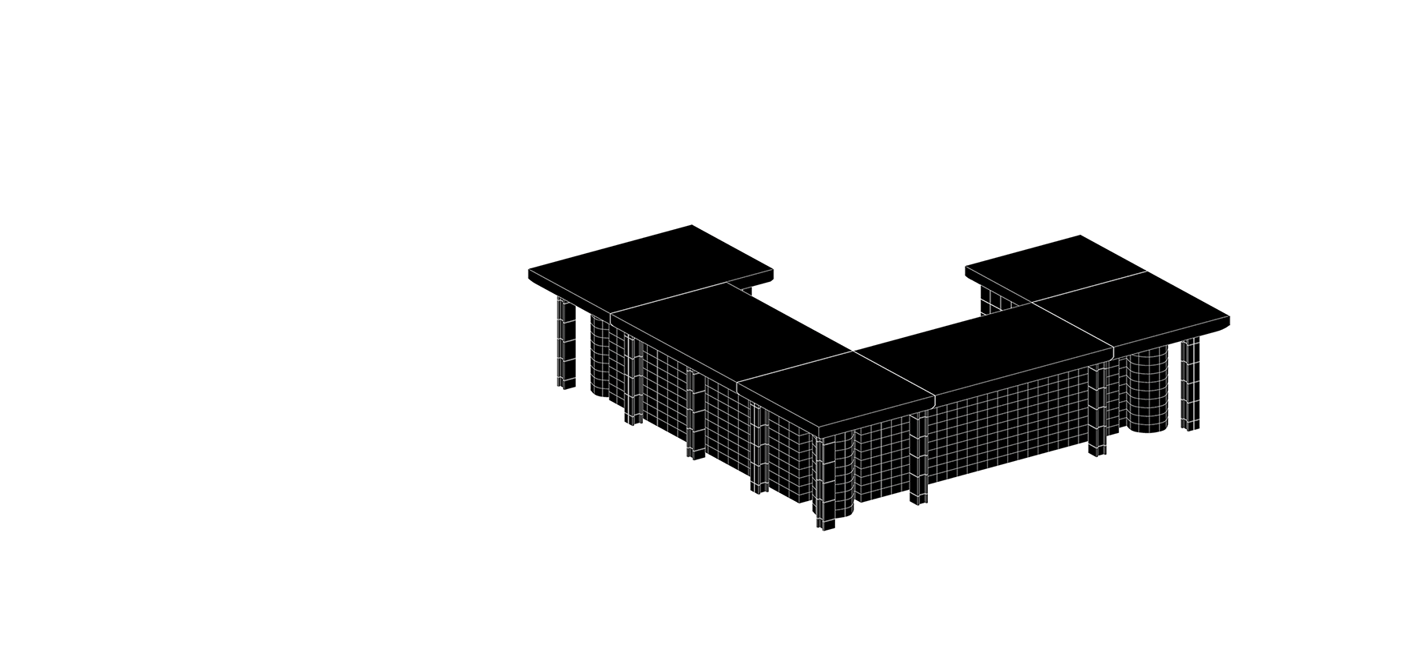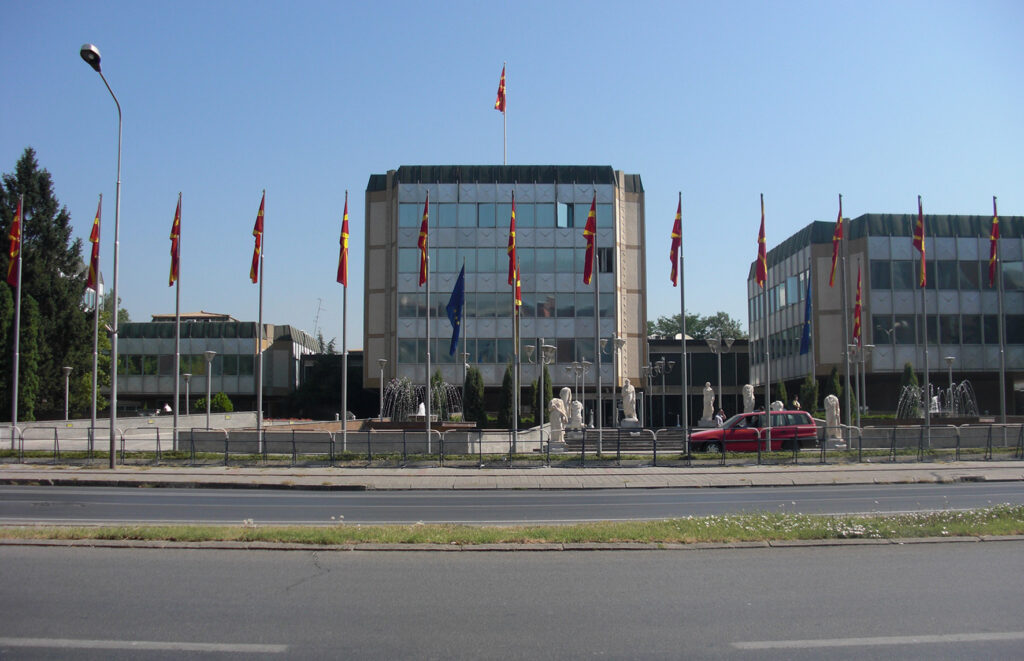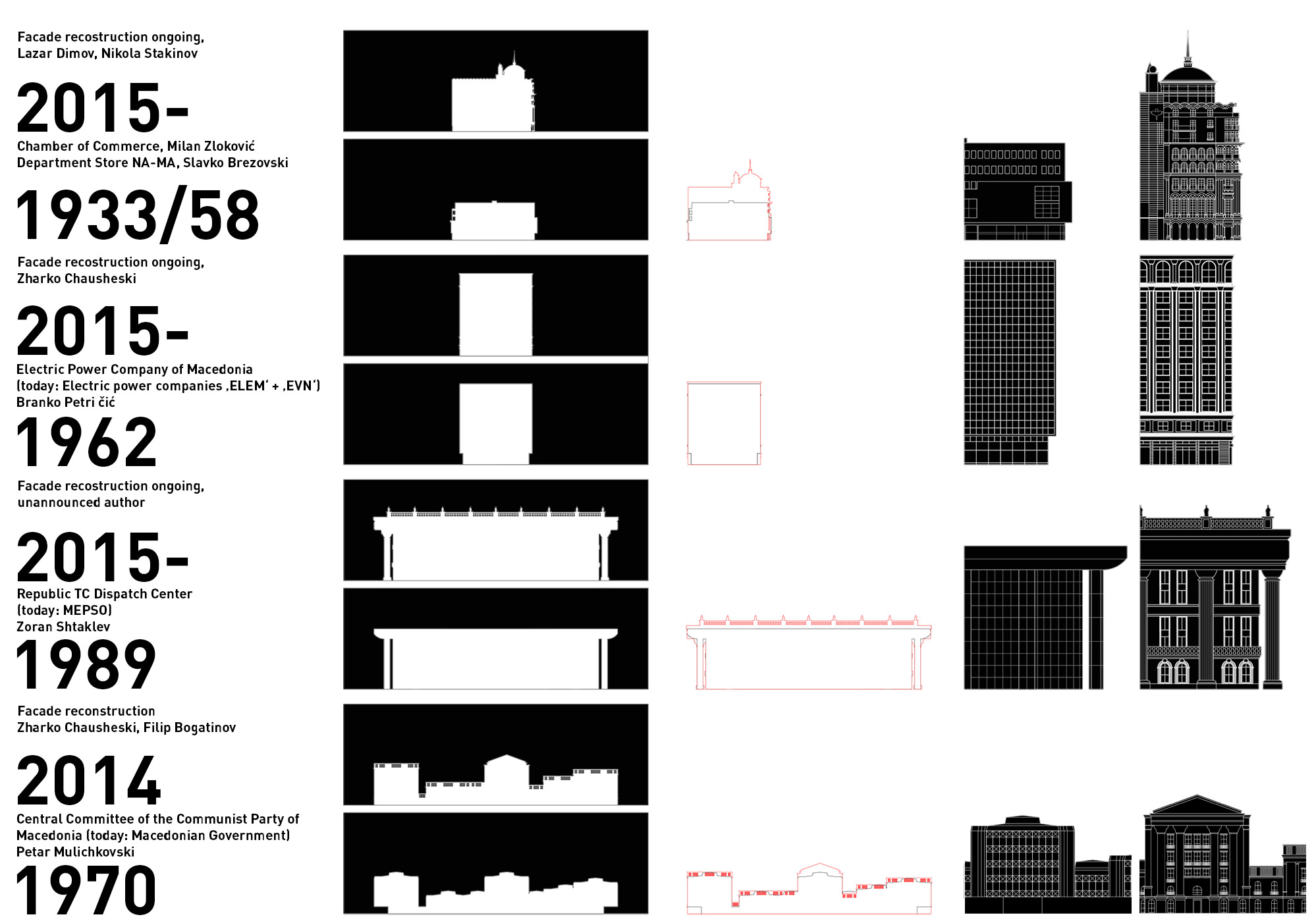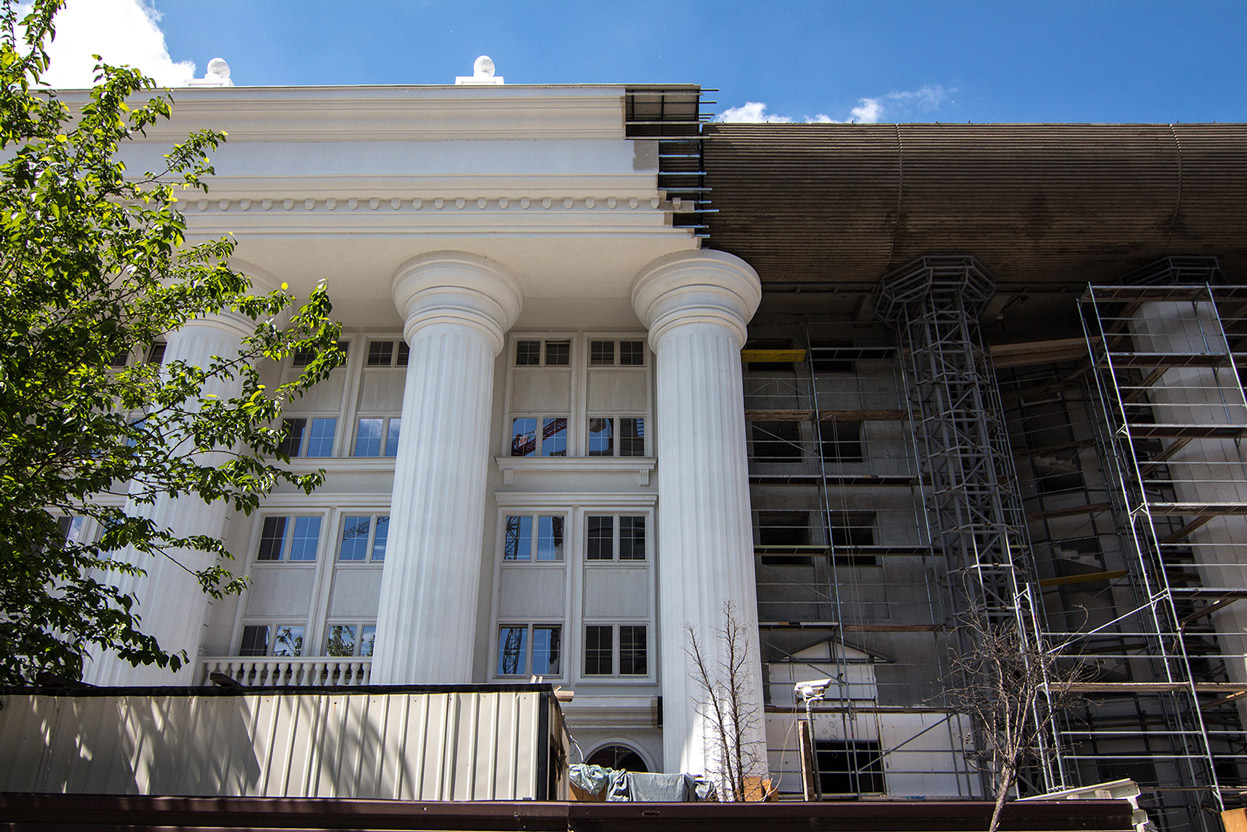

Government of the Republic of Macedonia, 2010

Government of the Republic of Macedonia, 2015
Refacade is the method of manipulating with architectural memory by changing its exterior appearance. It is a tactic for (de)constructing architectural memory by directly modifying existing architecture, i.e concealing, covering and wrapping it with a brand new skin. This new skin constructs a new architectural appearance and therefor, an image that suggests the presence of a different history behind that building.
Modifying architectural memory through refacading implies not just changing an existing one, but also inventing a new one as a substitute. There is an exchange of stories being made. In order to refacade an architectural history, one needs to produce a new one, which will be wrapped around the old one, completely covering it.
There are many examples of refacading in the center of Skopje, some of which are already done, others are in progress. By comparing the previous and new skin layers, their architectural language and the silhouettes they form, this tactic could be interpreted as a way of reverse face-lifting, face-lifting with the aim to make a building look older.
The only aspect taken into consideration is looks – the exterior appearance. No changes of the content are
being made. The insides remain as they were originally designed, echoing the architectural language and programming that once corresponded with its exterior.
In certain cases this tactic is being combined with another, for e.g. borrow, which makes a building resemble one from another place and time. One example is the refacaded Government of the Republic of Macedonia now resembling the white house of Washington.
A combination with the tactic emphasize has also been done. When refacaded, the shopping center City Gallery (originally department store Na-Ma), has also gained three more levels, making its new old surface larger.
Refacading resembles a great deal of a masquerade ball – of putting on a costume which will make one look like someone / something else, of a pretend game, but all along it is the same person underneath.
Is it possible to erase a portion of the past by putting a mask on it?
Can one deconstruct an architectural memory by disguising it?
And moreover, can one construct a new architectural memory by simply making an existing one look different?


MEPSO, 2015, Photo by Darmon Richter ©